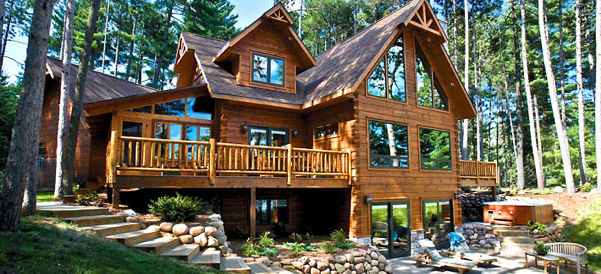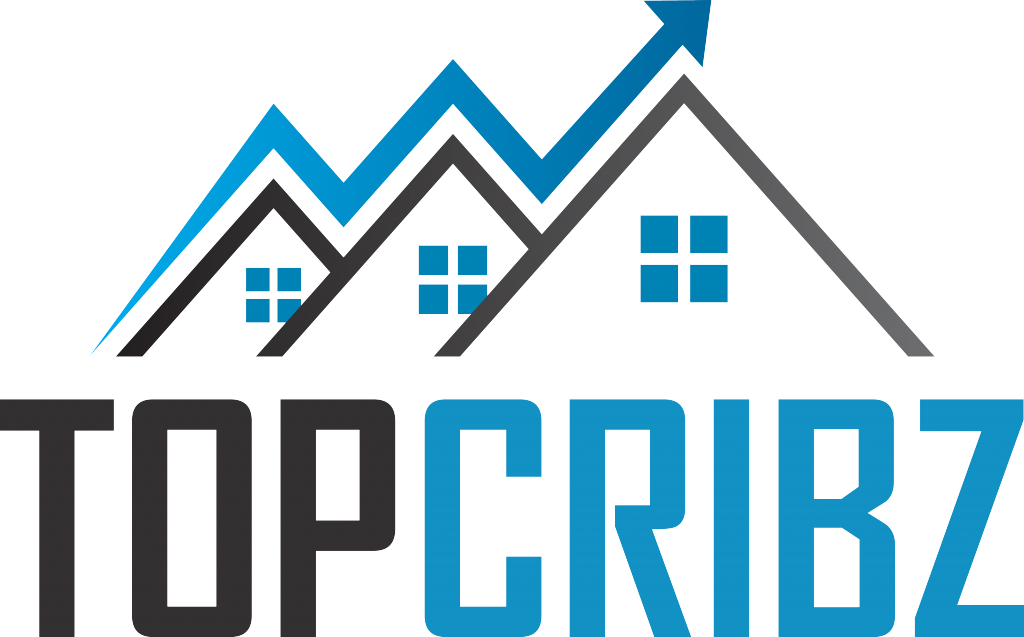Existing-home sales surged for the third straight month in November and reached their strongest pace in almost 11 years, according to the National Association of Realtors?. All major regions except for the West saw a significant hike in sales activity last month.
Lawrence Yun is chief economist and senior vice president of research at the National Association of Realtors(r). Yun oversees and is responsible for a wide range of research activity for the association including NAR’s Existing Home Sales statistics, Affordability Index, and Home Buyers and Sellers Profile Report. He regularly provides commentary on real estate market trends for its 1 million Realtor(r) members. (PRNewsFoto/National Association of Realtors)
Total existing-home sales1, https://www.nar.realtor/existing-home-sales, which are completed transactions that include single-family homes, townhomes, condominiums and co-ops, jumped 5.6 percent2 to a seasonally adjusted annual rate of 5.81 million in November from an upwardly revised 5.50 million in October. After last month’s increase, sales are 3.8 percent higher than a year ago and are at their strongest pace since December 2006 (6.42 million).
Lawrence Yun, NAR chief economist, says home sales in most of the country expanded at a tremendous clip in November. “Faster economic growth in recent quarters, the booming stock market and continuous job gains are fueling substantial demand for buying a home as 2017 comes to an end,” he said. “As evidenced by a subdued level of first-time buyers and increased share of cash buyers, move-up buyers with considerable down payments and those with cash made up a bulk of the sales activity last month. The odds of closing on a home are much better at the upper end of the market, where inventory conditions continue to be markedly better.”
The median existing-home price3 for all housing types in November was $248,000, up 5.8 percent from November 2016 ($234,400). November’s price increase marks the 69th straight month of year-over-year gains.
Total housing inventory4 at the end of November dropped 7.2 percent to 1.67 million existing homes available for sale, and is now 9.7 percent lower than a year ago (1.85 million) and has fallen year-over-year for 30 consecutive months. Unsold inventory is at a 3.4-month supply at the current sales pace, which is down from 4.0 months a year ago.
“The anticipated rise in mortgage rates next year could further cut into affordability if these staggeringly low supply levels persist,” said Yun. “Price appreciation is too fast in a lot of markets right now. The increase in homebuilder optimism must translate to significantly more new construction in 2018 to help ease these acute inventory shortages.”
First-time buyers were 29 percent of sales in November, which is down from 32 percent both in October and a year ago. NAR’s 2017 Profile of Home Buyers and Sellers – released earlier this year5 – revealed that the annual share of first-time buyers was 34 percent.
Matching the highest share since May, all-cash sales were 22 percent of transactions in November, which is up from 20 percent in October and 21 percent a year ago. Individual investors, who account for many cash sales, purchased 14 percent of homes in November, up from 13 percent last month and unchanged from a year ago.
“The elevated presence of investors paying in cash continues to add a layer of frustration to the supply and affordability headwinds aspiring first-time buyers are experiencing,” said Yun. “The healthy labor market and higher wage gains are expected to further strengthen buyer demand from young adults next year. Their prospects for becoming homeowners will only improve if more lower-priced and smaller-sized homes come onto the market.”
Properties typically stayed on the market for 40 days in November, which is up from 34 days in October but down from 43 days a year ago. Forty-four percent of homes sold in November were on the market for less than a month.
Realtor.com?’s Market Hotness Index, measuring time on the market data and listings views per property, revealed that the hottest metro areas in November were San Jose-Sunnyvale-Santa Clara, Calif.; Vallejo-Fairfield, Calif.; San Francisco-Oakland-Hayward, Calif.; San Diego-Carlsbad, Calif.; and Stockton-Lodi, Calif.
According to Freddie Mac, the average commitment rate for a 30-year, conventional, fixed-rate mortgage increased for the second straight month to 3.92 percent in November from 3.90 percent in October. The average commitment rate for all of 2016 was 3.65 percent.
On the topic of tax reform, NAR President Elizabeth Mendenhall, a sixth-generation Realtor? from Columbia, Missouri and CEO of RE/MAX Boone Realty, says it’s good news homeowners can continue to count on tax incentives such as the mortgage interest deduction and the state and local tax deduction.
“Only 6 percent of homeowners have mortgages exceeding $750,000, and only 5 percent pay more than $10,000 in property taxes, but most homeowners won’t itemize under the new regime,” she said. “While we’re pleased that important homeownership incentives such as the capital gains exclusion survived in conference, additional changes are required to truly incentivize homeownership in the tax code.”
Distressed sales6 – foreclosures and short sales – were 4 percent of sales for the fourth straight month in November, and are down from 6 percent a year ago. Three percent of November sales were foreclosures and 1 percent were short sales.
Single-family and Condo/Co-op Sales
Single-family home sales grew 4.5 percent to a seasonally adjusted annual rate of 5.09 million in November from 4.87 million in October, and are now 3.2 percent above the 4.93 million pace a year ago. The median existing single-family home price was $248,800 in November, up 5.4 percent from November 2016.
Existing condominium and co-op sales increased 14.3 percent to a seasonally adjusted annual rate of 720,000 units in November, and are now 7.5 percent above a year ago. The median existing condo price was $242,500 in November, which is 8.8 percent above a year ago.
Regional Breakdown
November existing-home sales in the Northeast leaped 6.7 percent to an annual rate of 800,000, (unchanged from a year ago). The median price in the Northeast was $273,600, which is 4.0 percent above November 2016.
In the Midwest, existing-home sales jumped 8.4 percent to an annual rate of 1.42 million in November, and are now 6.8 percent above a year ago. The median price in the Midwest was $196,100, up 8.8 percent from a year ago.
Existing-home sales in the South expanded 8.3 percent to an annual rate of 2.34 million in November, and are now 4.0 percent higher than a year ago. The median price in the South was $216,200, up 4.8 percent from a year ago.
Existing-home sales in the West declined 2.3 percent to an annual rate of 1.25 million in November, but are still 2.5 percent above a year ago. The median price in the West was $375,100, up 8.2 percent from November 2016.
The National Association of Realtors?, “The Voice for Real Estate,” is America’s largest trade association, representing 1.3 million members involved in all aspects of the residential and commercial real estate industries.
NOTE: For local information, please contact the local association of Realtors? for data from local multiple listing services. Local MLS data is the most accurate source of sales and price information in specific areas, although there may be differences in reporting methodology.
1 Existing-home sales, which include single-family, townhomes, condominiums and co-ops, are based on transaction closings from Multiple Listing Services. Changes in sales trends outside of MLSs are not captured in the monthly series. NAR rebenchmarks home sales periodically using other sources to assess overall home sales trends, including sales not reported by MLSs.
Existing-home sales, based on closings, differ from the U.S. Census Bureau’s series on new single-family home sales, which are based on contracts or the acceptance of a deposit. Because of these differences, it is not uncommon for each series to move in different directions in the same month. In addition, existing-home sales, which account for more than 90 percent of total home sales, are based on a much larger data sample – about 40 percent of multiple listing service data each month – and typically are not subject to large prior-month revisions.
The annual rate for a particular month represents what the total number of actual sales for a year would be if the relative pace for that month were maintained for 12 consecutive months. Seasonally adjusted annual rates are used in reporting monthly data to factor out seasonal variations in resale activity. For example, home sales volume is normally higher in the summer than in the winter, primarily because of differences in the weather and family buying patterns. However, seasonal factors cannot compensate for abnormal weather patterns.
Single-family data collection began monthly in 1968, while condo data collection began quarterly in 1981; the series were combined in 1999 when monthly collection of condo data began. Prior to this period, single-family homes accounted for more than nine out of 10 purchases. Historic comparisons for total home sales prior to 1999 are based on monthly single-family sales, combined with the corresponding quarterly sales rate for condos.
2 November’s monthly increase of 5.6 percent is the largest monthly gain since December 2015 (12.1 percent), which was influenced by delayed closings resulting from the rollout of the Know Before You Owe initiative in late 2015.
3 The median price is where half sold for more and half sold for less; medians are more typical of market conditions than average prices, which are skewed higher by a relatively small share of upper-end transactions. The only valid comparisons for median prices are with the same period a year earlier due to seasonality in buying patterns. Month-to-month comparisons do not compensate for seasonal changes, especially for the timing of family buying patterns. Changes in the composition of sales can distort median price data. Year-ago median and mean prices sometimes are revised in an automated process if additional data is received.
The national median condo/co-op price often is higher than the median single-family home price because condos are concentrated in higher-cost housing markets. However, in a given area, single-family homes typically sell for more than condos as seen in NAR’s quarterly metro area price reports.
4 Total inventory and month’s supply data are available back through 1999, while single-family inventory and month’s supply are available back to 1982 (prior to 1999, single-family sales accounted for more than 90 percent of transactions and condos were measured only on a quarterly basis).
5 Survey results represent owner-occupants and differ from separately reported monthly findings from NAR’s Realtors?Confidence Index, which include all types of buyers. Investors are under-represented in the annual study because survey questionnaires are mailed to the addresses of the property purchased and generally are not returned by absentee owners. Results include both new and existing homes.
6 Distressed sales (foreclosures and short sales), days on market, first-time buyers, all-cash transactions and investors are from a monthly survey for the NAR’s Realtors? Confidence Index, posted at nar.realtor.
NOTE: NAR’s Pending Home Sales Index for November is scheduled for release on December 27, and Existing-Home Sales for December will be released January 24; release times are 10:00 a.m. ET.
From https://www.prnewswire.com/news-releases/existing-home-sales-soar-56-percent-in-november-to-strongest-pace-in-over-a-decade-300573924.html





